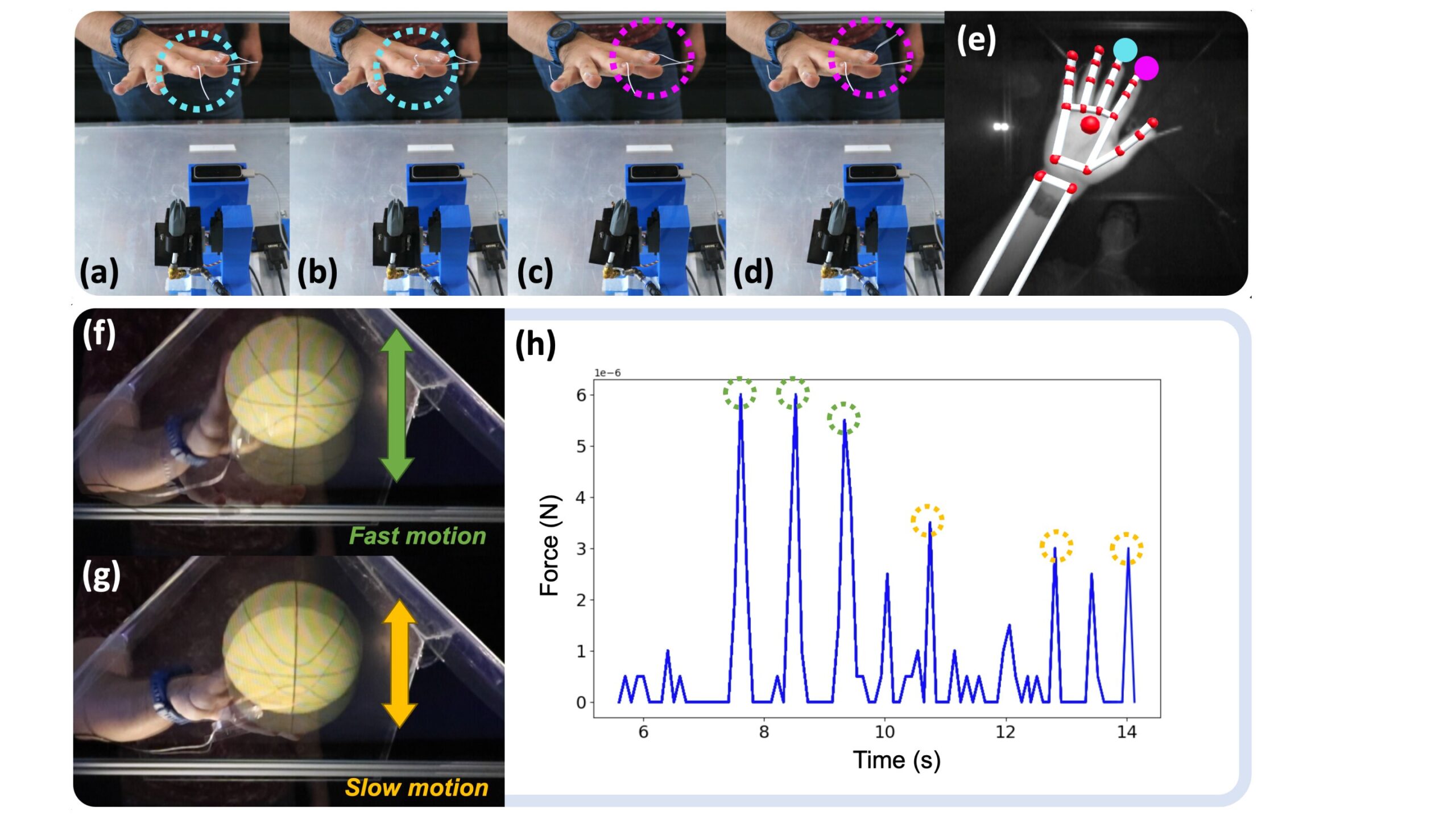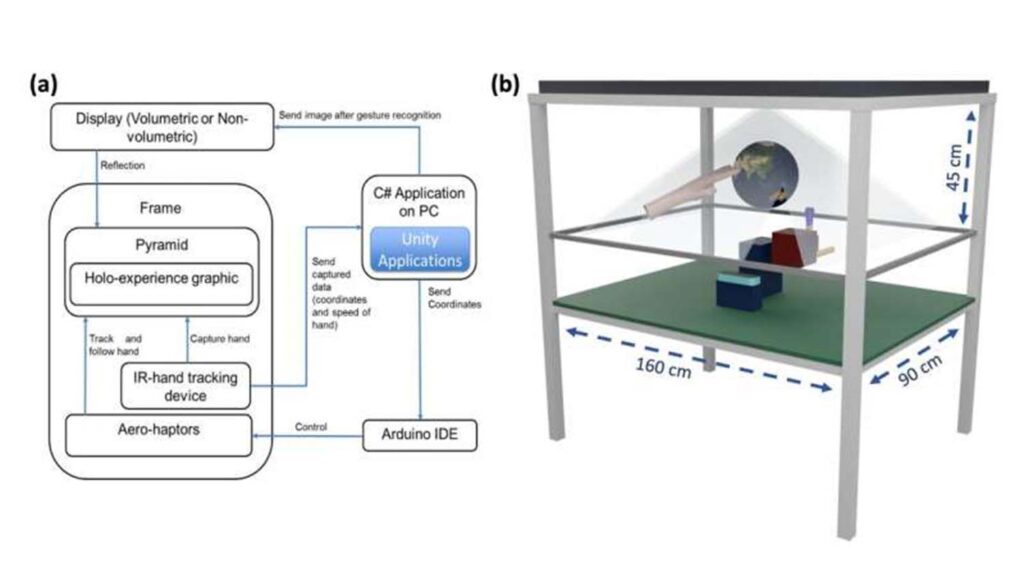A team of engineers from the University of Glasgow have developed a new means of haptic holograms, creating the sensation of physically interacting with holographic projections.
In a new paper published in the journal Advanced Intelligent Systems, the team describe how they have developed a new technique they call ‘aerohaptics’.
The system pairs volumetric display technology with precisely controlled jets of air to create the sensation of touch on users’ hands, using a Leap Motion sensor to track user hand movements with a moveable air nozzle to direct airflow to their palms and fingertips.

The system, developed by Glasgow University’s Bendable Electronics and Sensing Technologies (BEST) research group, is based around a pseudo-holographic display which uses glass and mirrors to make a two-dimensional image appear to hover in space – a modern variation on a 19th-century illusion technique known as Pepper’s Ghost.
In the paper, the team offer an example of how they used the system to create a realistic sensation of bouncing a basketball. With a computer-generated 3D image of a basketball displayed in space, and the Leap Motion sensor tracking the movement and location of the user’s hands, the system varies the direction and force of the airflow to create aerohaptic feedback.
The feedback is also modulated based on the virtual surface of the basketball, allowing users to ‘feel’ the rounded shape of the ball as it rolls from their fingertips when they bounce it and the slap in their palm when it returns.
Users can ‘push’ the virtual ball with varying force and sense the resulting change in how a hard bounce or a soft bounce feels in their palm.
Current haptic tech often still involves wearable or handheld peripherals, to which aerohaptics’ creators suggest it can prove more cost effective than, and even add further convincing sensations to the system, such as temperature control to to deepen the sensation of interacting with hot or cool objects.
The team’s paper, titled ‘Pseudo-Hologram with Aerohaptic feedback for Interactive Volumetric Displays’, is published in Advanced Intelligent Systems. The research was supported by funding from the Engineering and Physical Sciences Research Council (EPSRC).






